M/Cing to SA: We island hop on Peru’s Lake Titicaca
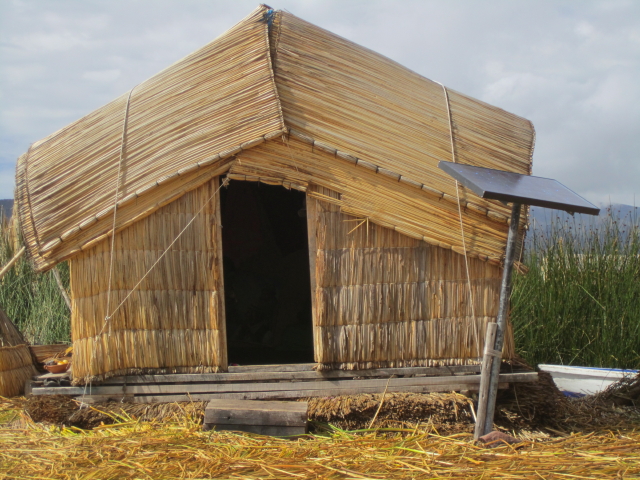
Weirdly ancient meets wierdly modern. Basic house built of reeds on a reed island, harnessing the power of the sun. Welcome to the Los Uros life style.
We go island hopping in Lake Titicaca
Why do we travel? To see far away places? for sure. To relax on a beach? not so much. To get away from it all? not really. We travel to learn about how other people, in far away places, live. To try to get a glimpse of walking in their shoes. How we do this provides a natural tension between Karen and I, as we are the Ying and Yang of travel buddies. My Ying is all about speed, distance, local bars, restaurants, and talking with people. If I had my way, we’d have covered 12,000 miles by now, not the 6,000 we’ve done. We’d have seen South America, an inch deep. KR ‘s Yang is all about history, architecture, culture, crafts, local markets, and art. KR would rather spend one day riding and six days exploring a town. I would prefer the opposite.
Puno’s claim to fame is that sits on Lake Titicaca, the highest navigable lake in the world. Lake Titicaca is renowned for its many islands and the way that their isolation has minimized changes to their way of life. Aside from being on the lake, Puno doesn’t have much going for it -nothing remotely associated with architecture, art, or culture. To me, it looks like a party town where Peruvians who live in the surrounding Altiplano can come and let loose. So, it’s not surprising when we pulled into Puno (at dusk in a drizzling rain) after a tough 250 mile ride through the Sacred Valley, rising higher in the Altiplano, hitting rain, bad roads, and crazy traffic in Juliaca that I’m thinking we’ll take a rest, maybe a couple of hour boat ride to an island, and then push south toward Bolivia.
I can gauge KR’s interest by what she’s reading on the Internet or in our one guidebook. I should have known that my quick in and out plan wouldn’t fly as Karen had been reading about the islands of Titicaca for days. Quicker than you can say, “What do you want to do?” we’re across the street to a travel agent and we’ve booked a two DAY (not hour) boat trip to three Titicaca islands. Our excursion would take us to one of the 60 Los Uros islands, we’d spend the night with a local family on the island of Amantani, and finally take a walking tour of Taquili, which served as Peru’s Alcatraz for decades.
When was the last time you had a meal in an adobe walled kitchen, lit only by one light bulb, with an open oven on one end, and a bench-like table on the other? This 7×15 foot room was family-central for Victoria, Raul and their three children . It’s so cold at night, at least to gringos who aren’t use to the nightly temperature drops of the Altiplano’s 12000 ft, that the everyone knows that its best to huddle next to mom as she cooks in the open clay oven. We’re at the other end of the kitchen and are warmed only by the friendliness of our hosts and Victoria’s wonderful soups. Spending the night with Victoria and Raul’s family was the highlight of our island hopping and one of the singular most unique experiences of our trip.
I come away from our night with Victoria and Raul HAPPY to have met them. To have learned (once again) that modern conveniences and material wealth have little to do with happiness. They live a very, very simple life organized around growing food and making tourists like ourselves feel welcome. Their home is void of most of the things we would count as necessities (electricity, TV, refrigerator, heat, indoor toilet, microwaves) but is cozy, clean, and has a wonderful view of the lake from high up on the island. Who’s to say which of us live the richer life?
The people of the Los Uros islands make Victoria and Raul look like the Jetsons. The 80 Los Uros islands are built of reeds and float in the bay not far from downtown Puno. Originally built as a way of protection centuries ago, they now thrive as a magnet for tourists. The islands are constructed of three-foot thick blocks of reed roots with a two-foot mattress of reed placed on top. Walking on them is like walking on a mattress. Everything is tied together with an ingenious system of ropes and weights. Each island contains about a dozen homes, corresponding kitchens, schools, observation platforms, workshops and mini docks. We spent a couple of hours on one of them chatting with the families, buying some of their wares, and taking a “harbor” cruise in a reed paddle boat. The people of Uros take living on the water to the extreme, making for a life style that is a “curiosity” to us, but seems pretty normal to them.
We were warned by many people that we’d be shocked by the poverty in Peru and Bolivia. In our four weeks in Peru, we haven’t seen shocking levels of poverty. Not that there aren’t poor people living in the streets. There are. It’s extremely sad to see Peruvian mothers and their young children sitting on the sidewalk in Cusco begging. But, is this much different than the streets of downtown Los Angeles or San Francisco? Rather, our impression is most of the people living in the Peruvian Andes and Altiplano are living much simpler lives closer to their ancestor’s than what we’d consider “modern” existences. Many of us interpret this simpler life as poor and impoverished. Perhaps, I don’t think poor and a basic life equates with happiness. We’ve never been greeted by more people with radiant smiles and a willingness to help than in Peru.
Here’s what a couple of days in Puno and the islands of Lake Tikitaca look like.
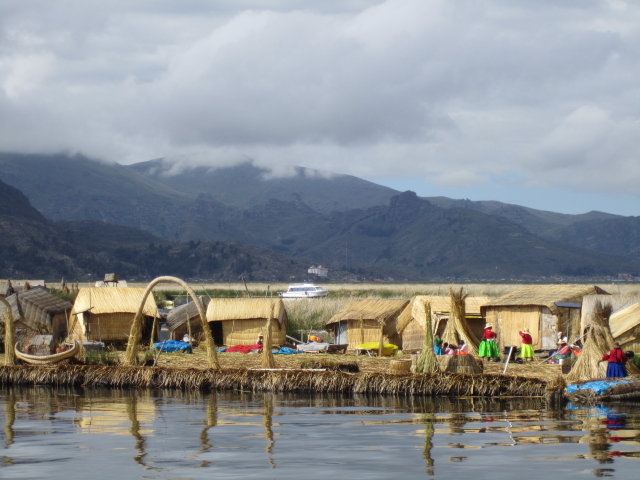
We approach one of the many islands made from reeds. This is a good shot showing the 3ft reed roots serving as foundation with the bed of reeds on top.

Each island competes with their neighbor for tourists' interest. Here a giant fish serves as the observation deck along with a sun god.
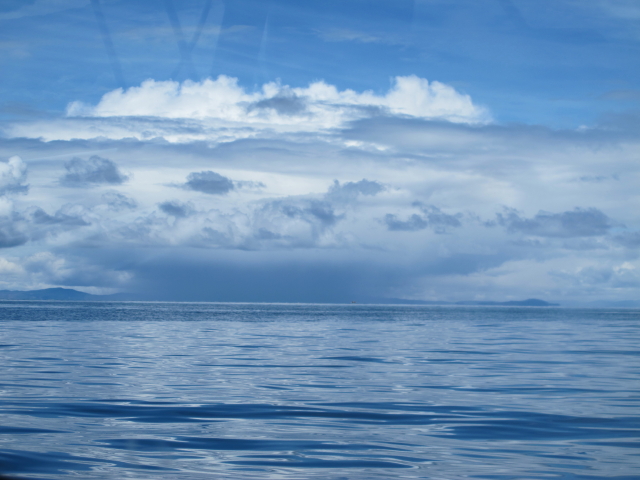
There can be a dozen changes in weather on any given day. Sunshine and bright clouds can turn to overcast and raining and back again in a matter of minutes/hours.
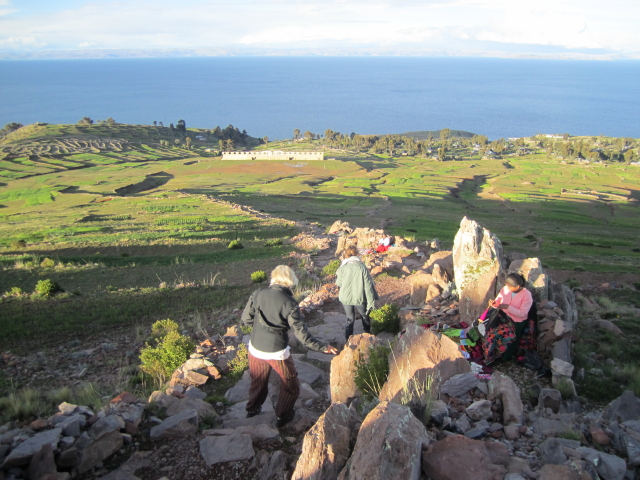
This is a shot coming down from the top of Amantani. We hiked the 1000 ft to the top of this island, in which the views were spectacular. Along the trail, locals would offer everything from cokes to hats to coca leaves to aid the traveler.
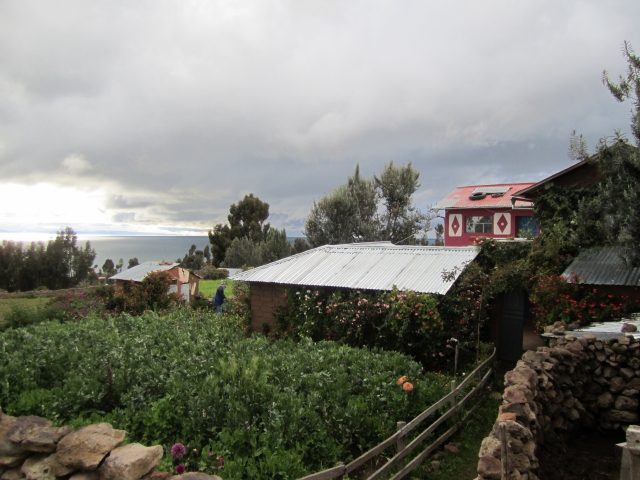
Our host's house, with significant garden. shed for the goats, upstairs bedrooms for guests and outhouse downwind.

Cooking dinner is a family affair. Victoria is standing in front of the open oven while Raul washes the dishes. Children run outside occasionally to get the gringos another bottle of warm beer.



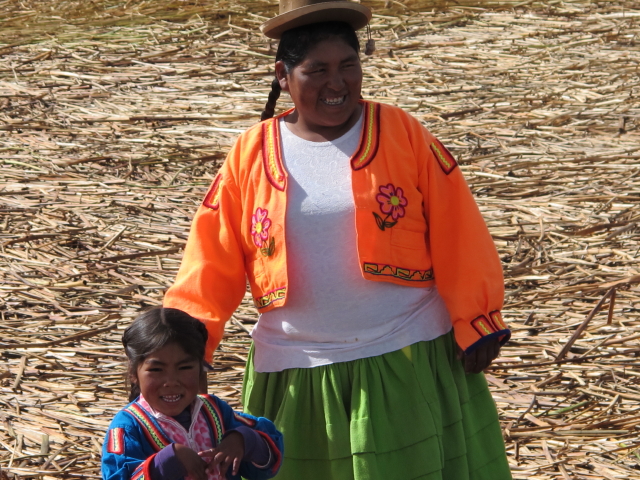
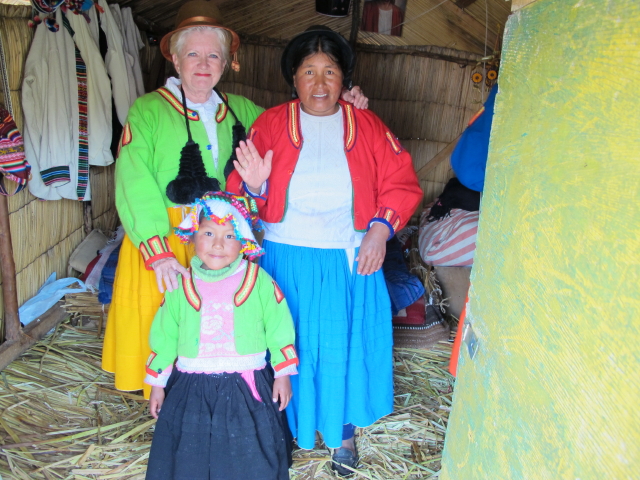
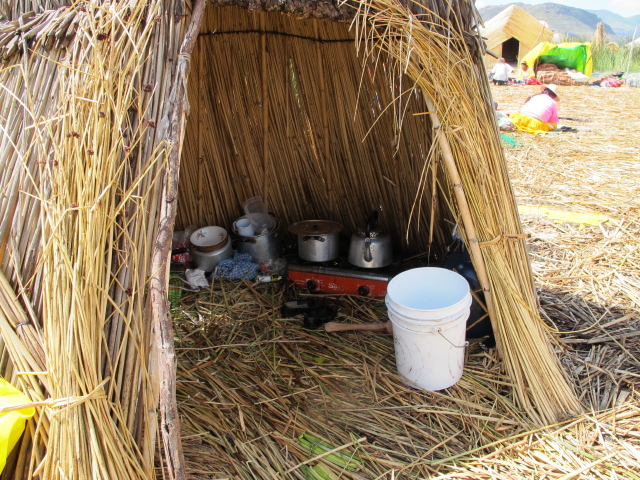
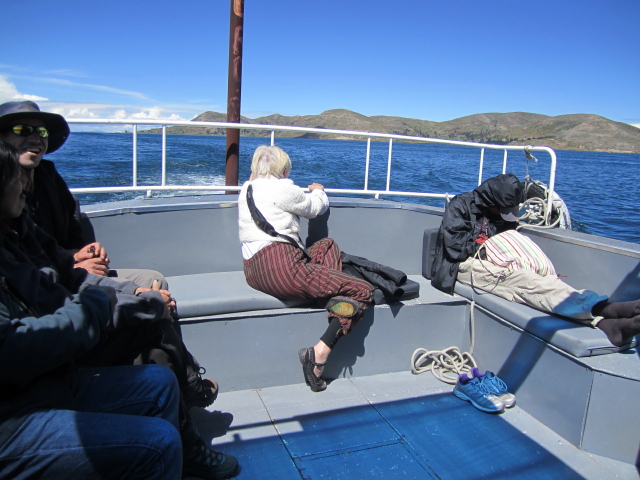
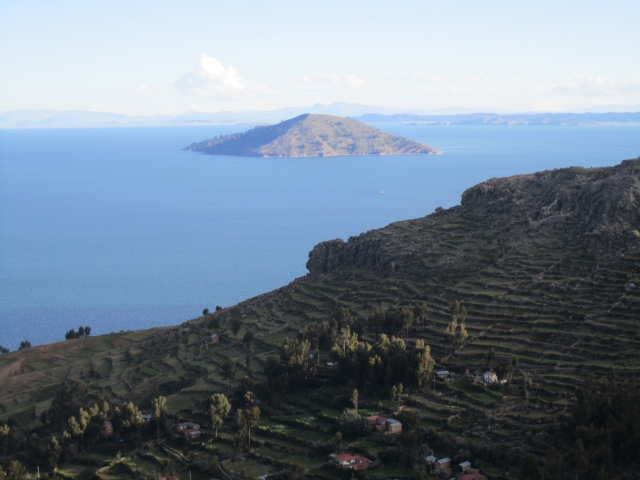
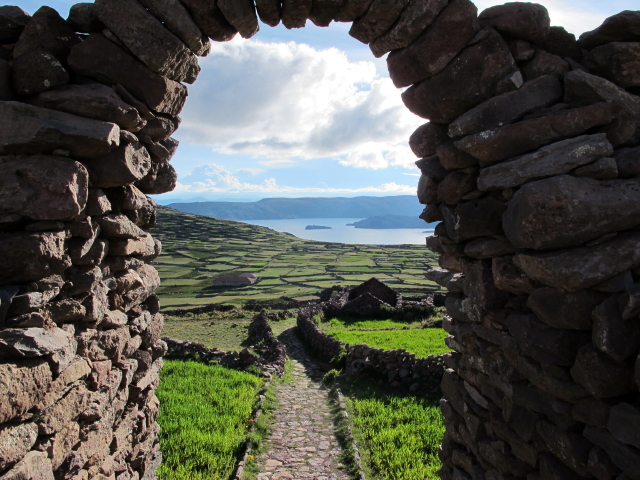
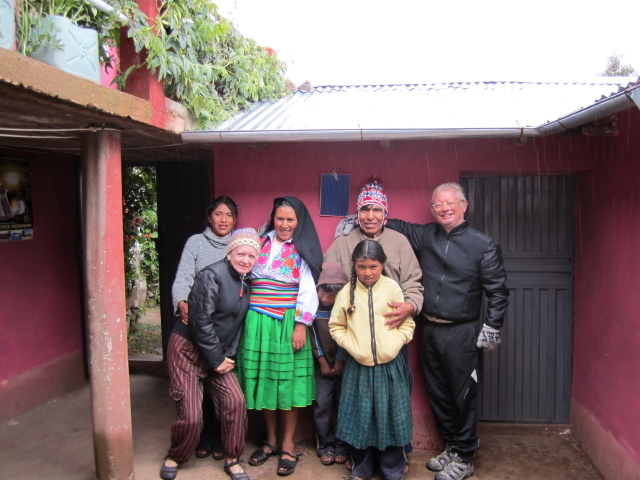

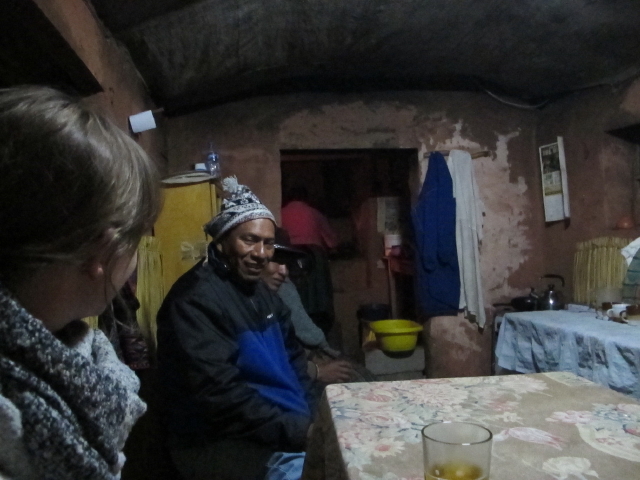
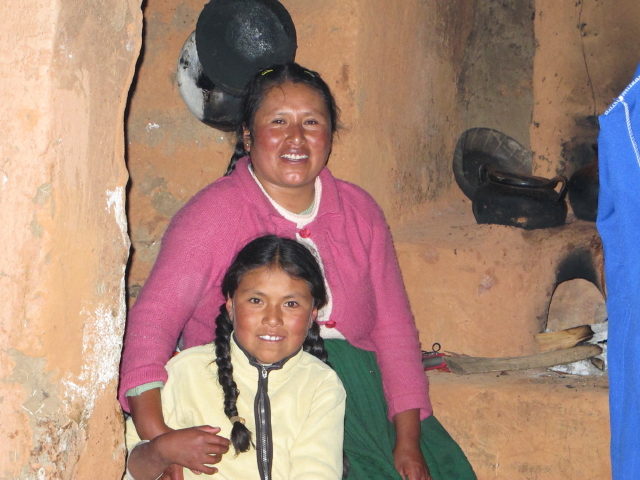


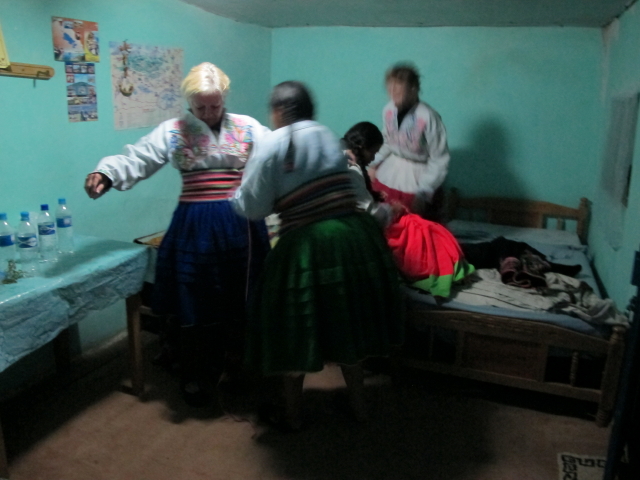

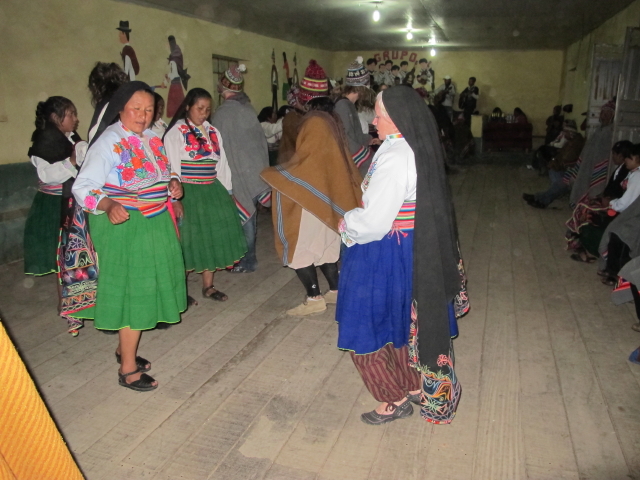


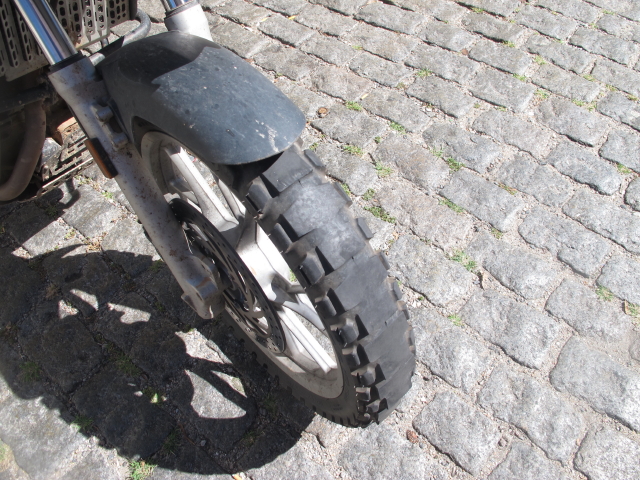
Wonderful photos KR! And a level of emotional description seldom seen (or expected) from “Captain Adventure”. Jill and I are loving traveling with you day by day experiencing all the wonder, trial and tribulations…from our living room with a glass of wine. Love & Kisses
Best segment yet in terms of interesting culture, ambiance, and vistas. Victoria and Raul seem a special highlight in a reel of many unforgettable experiences. Great reading about your travels – I suspect it is even better living it. Onward, Walti and Rutherford, your fans await the news.
I agree with the above; this was a good read; even better pics. Only one problem with you writings. They always lead to me to the internet to learn even more about the places you’ve been. That means wiki and you know how that goes.
Been away. Glad to see/hear you are having fun. Love all your writings and photos.